The past as present: Masculinity in postcolonial Pakistan
'This exhibition brings together four emerging artists with promising practices'
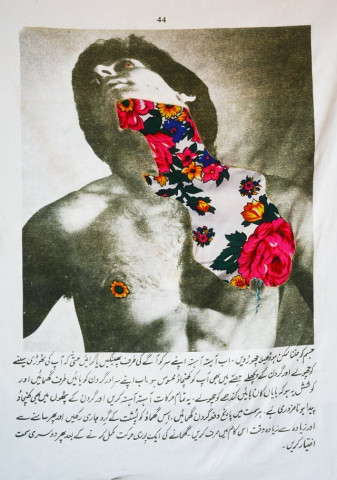
Bhutto's 'Slowly slowly'
PHOTO: GANDHARA ART GALLERY
Curated by Aziz Sohail, 'The Past as Present' opened at Gandhara Art Space in Karachi and features the works of Zulfikar Ali Bhutto Jr, Veera Rustomji, Moonis Ahmad and Ghulam Muhammad.
Sohail told The Express Tribune, "This exhibition brings together four emerging artists with promising practices, all of whom approach and use the subject of archive to complicate histories and narratives - may this be from the concept of national identity and language, or gender and sexuality - the archive and its materiality becomes central in their practice and is manipulated to re-create new truths."
Art exhibition explores country’s varying narratives
Zulfikar Ali Bhutto Jr
Zulfikar's work, which was showcased in Pakistan after over two years revolved around the use of 'feminine' symbols to showcase how masculinity is not only about being strong and muscular, but can, in fact, be soft and gentle.
When asked what it means to have his work displayed in Pakistan, he says, "having my work displayed in Pakistan is important for me. My inspiration is Pakistan, Pakistani artists, artisans and traditions of popular art. Knowing that my work is being seen by people in my home is a wonderful feeling."
In a video explaining his work, uploaded earlier this year, Zulfikar talked about the baggage attached to 'masculinity', and went on to explain how the violence that has erupted in the Bhutto family led him to look at it in a different light. He believes that masculinity should be endowed with softness, and that adding colour and knitting colourful patches of work to his art would exhibit that.
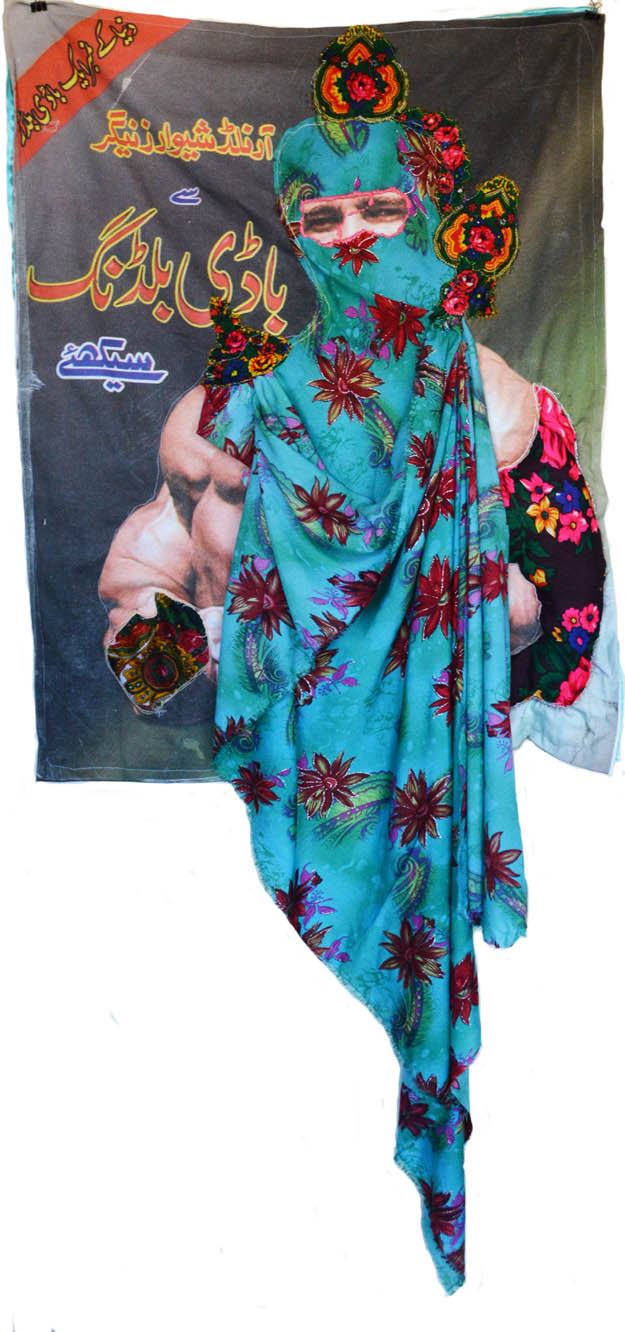 The Best Body Builder in the World - Zulfikar Ali Bhutto JrPHOTO: GANDHARA ART GALLERY
The Best Body Builder in the World - Zulfikar Ali Bhutto JrPHOTO: GANDHARA ART GALLERYHe plays with symbols of both genders and amalgamates them into one to show that "gender roles" are fluid, and don't need to be caged concepts.
Speaking to The Express Tribune, Zulfikar said, "The series, Mussalmaan Musclemen, which was shown at Gandhara are all taken from a translation of a book supposedly written by Arnold Schwarzenegger, muscleman icon, actor and former governor of California.
"This collection of images of what appear to be Anglo and/or American men alongside the Urdu translation projects this book into a world of its own creation, existing neither completely in the ‘East’ or in the ‘West’. It occupies a liminal space, one of translation"
Veera Rustomji
The need to highlight the behaviour associated and attributed to masculinity, in the modern and colonial man, is the theme of Rustomji's work. She is in conversation with men of both the past and the present and highlights items that are important to both.
Her work involved taking metal structures, used to measure a man's head for traditional phetas, and painting iconic colonial images on them. A Gujarati pheta is a traditional Parsi hat which was and is still worn by men of prominence and stature. By painting colonial images on them, she visualises the man's need to conquer and succeed.
Speaking to The Express Tribune she commented that her work symbolises how the 21st century man is expected to be a certain way. She explained that her work exhibited feelings of nostalgia and empathy for the men of both generations because of the burden of being "the bread earner of the family."
 Rustomjee's work with the Buckingham palace painted onPHOTO: GANDHARA ART GALLERY
Rustomjee's work with the Buckingham palace painted onPHOTO: GANDHARA ART GALLERYMoreover, her work subtly demarcates the line of how the man of today differs from the man of yesterday. The colour composition of today's boxes were more vivid, bright which showcased her take on the 'new man' having additional responsibilities and things to think about.
Rustomji's video montage played during the exhibit, "Men doing manly things" was a surprisingly pleasant compilation that highlighted Parsi men performing acts considered most manly. In the video, scenes of men washing their cars, changing tyres and playing billiards played on a loop.
Ghulam Mohammad
Jameel Prize winning artist, Ghulam Mohammad's work was nothing short of pure brilliance as he carved the words from text books on to sheets which gave a stunning illusion as the light crashed through it. It is noted that Mohammad spends days and hours crouching in one position to carve the text. The font inscribed in Urdu and Persian can smoothly take the viewer into a state of distinct connection between the art in sight and art of words.
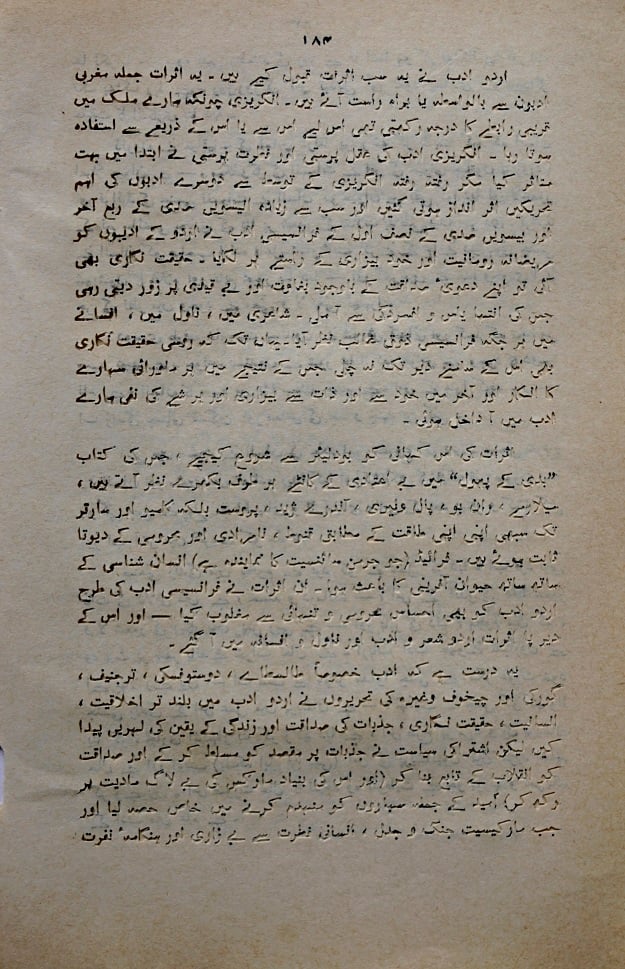 PHOTO: GANDHARA ART GALLERY
PHOTO: GANDHARA ART GALLERYContemporary artists use art to show exuberance
Moonis Ahmad
In a closed corner, Moonis Ahmad's work on birds and their symbolism was displayed. The well crafted description stated how birds have been used as a medium to share messages and what they ultimately symbolise. On a digital canvas, Moonis portrayed his imagination joining the dots from bird conspiracy which heavily relates to the alleged 'spy' pigeons Pakistan sends to India, to the ornithology of mysterious birds.
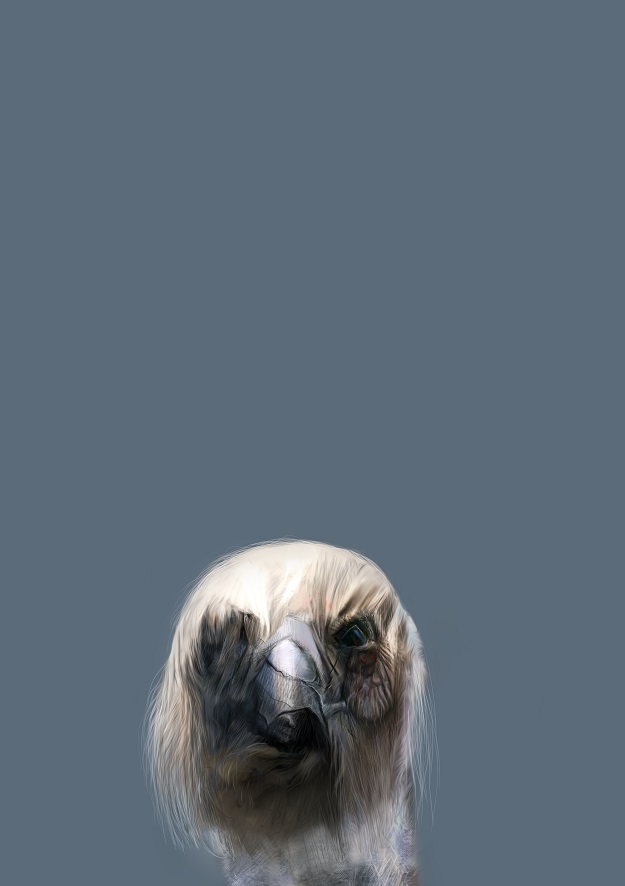 Moonis Ahmed's workPHOTO: GANDHARA ART GALLERY
Moonis Ahmed's workPHOTO: GANDHARA ART GALLERYThe show concludes on September 16.






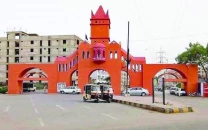












COMMENTS
Comments are moderated and generally will be posted if they are on-topic and not abusive.
For more information, please see our Comments FAQ